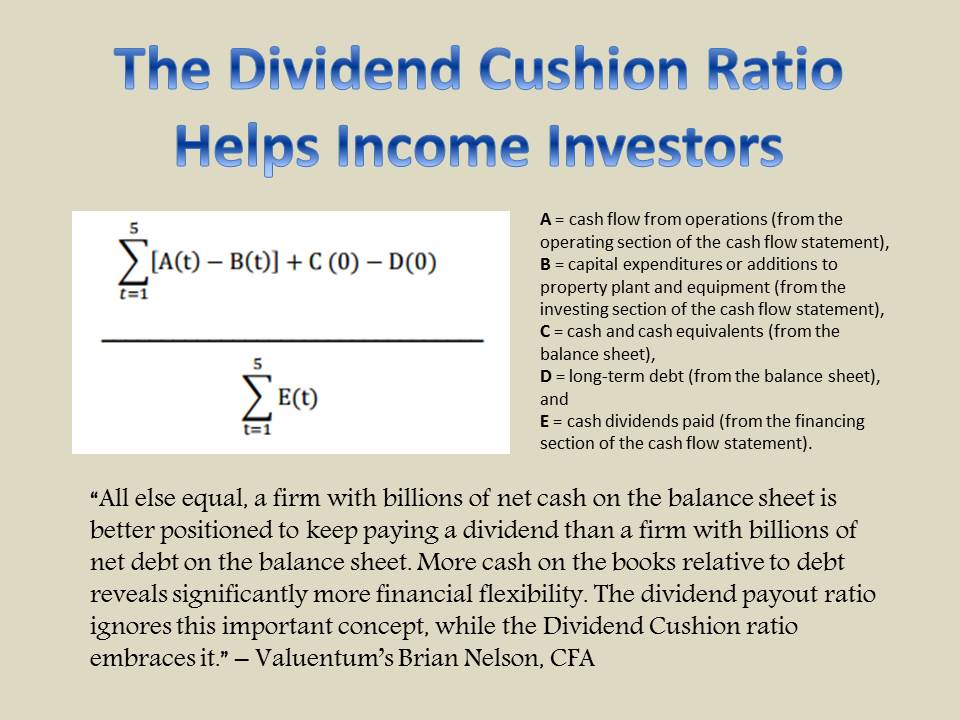Member LoginDividend CushionValue Trap |
Fundamental data is updated weekly, as of the prior weekend. Please download the Full Report and Dividend Report for
any changes.
Nov 3, 2011
Kellogg's Cutbacks Coming Home to Roost; Posts Weak Third Quarter and Outlook
Kellogg reported weak third-quarter results and issued a weak outlook for 2012 citing the need to improve its supply chain after drastic cutbacks in recent years. We remain on the sidelines. Nov 3, 2011
Qualcomm Reports Strong Fiscal Fourth Quarter on Proliferation of Smartphones
Qualcomm reported excellent fiscal fourth-quarter results and provided a better-than-expected outlook for fiscal 2012. The firm's patent portfolio continues to reap the benefits of smartphone and 3G adoption. However, we think the name looks fairly valued at today's levels. Nov 2, 2011
Excellent Third-Quarter Results from Eastman Chemical
Eastman Chemical put up solid third-quarter results. We continue to evaluate the firm for addition to our Best Ideas portfolio. Nov 2, 2011
Clorox Posts Fiscal First-Quarter Results; Reaffirms 2012 Outlook
Clorox posted less-than-impressive fiscal first-quarter results, as higher commodity costs took their toll. Management expects gross margins will remain flat through fiscal 2012, but we disagree. We remain on the sidelines, despite the firm's solid cash-flow generation. Nov 2, 2011
Pfizer Reports Decent Third-Quarter Results; Loss of Exclusivity on Blockbuster Drug Lipitor Concerning
All things considered, we're less than thrilled with Pfizer. The firm will be losing exclusivity on its $10-billion-per-year blockbuster drug Lipitor at the end of November, and its earnings-per-share expansion is largely driven by buybacks. Though its valuation is compelling, there are better opportunities out there. Oct 31, 2011
Republic Services Puts Up Nice Third Quarter; Best Organic Revenue Growth Since 2008
Rubbish-handler Republic Services posted nice third-quarter results and its best organic revenue growth since 2008. It remains one of our best ideas and dividend picks. Oct 28, 2011
Visa Provides Investors with Underrated Growth Prospects
Due to a better than expected outlook for 2012, and a favorable ruling by the Fed regarding the Durbin Amendment, we think Visa is now worth $126 per share, roughly a 25% premium to where the stock currently trades. Oct 28, 2011
Boeing Investors Need to Focus on Earnings Quality; Cash Flow Remains Weak
We dive into Boeing's third-quarter results. The flexibility of program accounting gives way too much leeway to management in setting earnings. We wouldn't read too much into the firm's increased guidance, but we do think its massive backlog supports continued strength in the aerospace supply chain. Oct 28, 2011
Investors in Ancestry.com Look to Seasonally Strong First Quarter, Release of 1940 Census
We evaluate Ancestry.com's third-quarter results and maintain the firm's shares are incredibly cheap.
prev12345678910111213141516171819202122232425
26272829303132333435363738394041424344454647484950 51525354555657585960616263646566676869707172737475 767778798081828384858687888990919293949596979899100 101102103104105106107108109110111112113114115116117118119120 121122123124125126127128129130131132133134135136137138139140 141142143144145146147148149150151152153154155156157158159160 161162163164165166167168169170171172173174175176177178179180 181182183184185186187188189190191192193194195196197198199200 201202203204205206207208209210211212213214215216217218219220 221222223224225226227228229230231232233234235236237238239240 241242243244245246247248249250251252253254255256257258259260 261262263264265266267268269270271272273274275276277278279280 281282283284285286287288289290291292293294295296297298299300 301302303304305306307308309310311312313314315316317318319320 321322323324325326327328329330331332333334335336337338339340 341342343344345346347348349350351352353354355356357358359360 361362363364365366367368369370371372373374next The High Yield Dividend Newsletter, Best Ideas
Newsletter, Dividend Growth Newsletter, Nelson Exclusive publication, and any reports, articles and content found on
this website are for information purposes only and should not be considered a solicitation to buy or sell any
security. The sources of the data used on this website are believed by Valuentum to be reliable, but the data’s
accuracy, completeness or interpretation cannot be guaranteed. Valuentum is not responsible for any errors or
omissions or for results obtained from the use of its newsletters, reports, commentary, or publications and accepts
no liability for how readers may choose to utilize the content. Valuentum is not a money manager, is not a
registered investment advisor and does not offer brokerage or investment banking services. Valuentum, its employees,
and affiliates may have long, short or derivative positions in the stock or stocks mentioned on this site.
|
|||||||||||||||||||||


The coffee giant posted excellent fiscal fourth-quarter results and provided an outlook for fiscal 2012 that resonated well with investors. We think 2013 will be even better, but we're not thrilled by the firm's valuation. We're waiting for a pullback to scoop up Starbucks' shares.